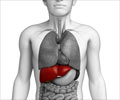- Kasper, D., Fauci, A., Hauser, S., Longo, J., Jameson, J., et.al. (2015). Harrison''s Principles of Internal Medicine 19th Edition. (Vol. 1 & Vol. 2). McGraw Hill Professional.
- Hemochromatosis - (http://www.niddk.nih.gov/health-information/health-topics/liver-disease/hemochromatosis/pages/facts.aspx)
What is Hemochromatosis?
Hemochromatosis is a disorder where there is too much iron in the body. The excess iron gets deposited in tissues and organs, thereby resulting in its damage.
Most of the iron in our body is present in hemoglobin. The iron is absorbed by the digestive tract from the diet and is carried through the blood with the help of a protein called transferrin. Excess iron is stored in a protein called ferritin, which releases the iron at times of need.
In a normal person, a constant iron content of 3 to 4 g is maintained by a balance between the amount of iron absorbed by the digestive tract and the amount eliminated from the body through urine, feces, sweat, blood loss and loss of body cells. In hemochromatosis, there is an excess amount of iron in the body. This excess iron gets deposited in the cells of the liver, pancreas, heart, skin and pituitary gland in the brain, thereby causing damage.
What are the Causes of Hemochromatosis?
Hemochromatosis may be caused due to:
- Genetic factors which result in an abnormal handling of iron by the body. A C282Y mutation in the HFE gene is the common culprit. The mutation results in excessive absorption of iron from the digestive tract. Mutations in the hemojuvelin or hepcidin genes cause severe hemochromatosis in young individuals between the ages of 15 and 30 years.
- Repeat blood transfusions in people with conditions like thalassemia, sickle cell anemia and sideroblastic anemia. Such patients present with low or abnormal hemoglobin counts and therefore need blood transfusions on a regular basis. This causes accumulation of excess iron resulting in secondary hemochromatosis. Individuals with these blood disorders also absorb excess iron from the digestive tract.
- Chronic liver disease in conditions like hepatitis C and alcoholic cirrhosis also causes iron overload.
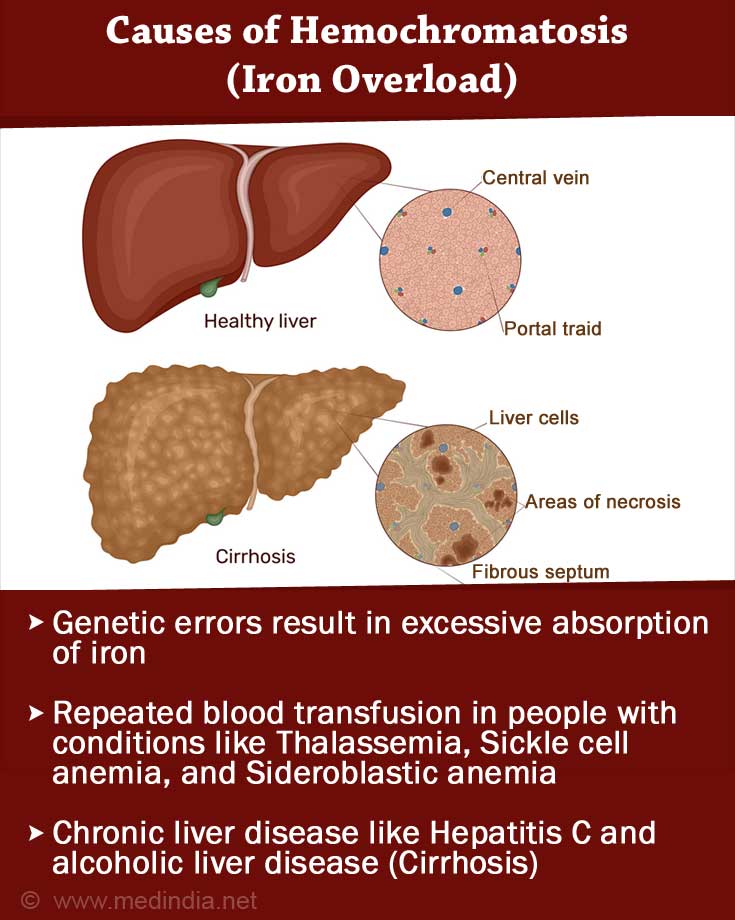
A form of hemochromatosis called neonatal hemochromatosis affects newborns resulting in liver failure and death of the baby. Though the exact cause is not known, it has been suggested that the mother’s immune system may be responsible for the disease in the baby.
Risk factors for the development of hemochromatosis include:
- Other people in the family being diagnosed with the condition
- Caucasians of North European descent. Hereditary hemochromatosis is rare in other populations
Though both men and women can be affected, men may show symptoms early. Women may manifest symptoms only after menopause since they lose iron regularly through menstrual blood before that.
What are the Symptoms and Signs of Hemochromatosis?
Patients with lesser amounts of iron overload may not show any signs and symptoms. As the iron content increases, the patient may experience symptoms like:
- Fatigue
- Joint pain
- Changes in the color of the skin
- Decreased sexual function
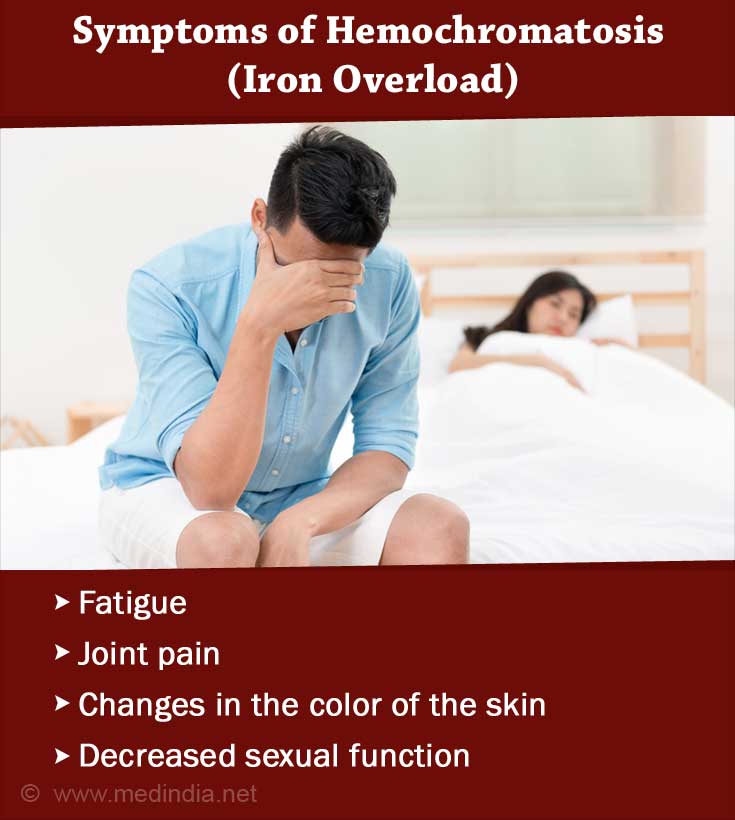
Features of the late stages of hemochromatosis include the following:
- Liver enlargement and in later stages liver failure and even liver cancer. Liver involvement may be obvious by the presence of ascites (fluid accumulation in the abdomen), jaundice, and dilated veins around the umbilicus or belly button
- Enlargement of the spleen
- Diabetes mellitus, due to the involvement of the pancreas. Those who are predisposed to developing diabetes due to other factors are particularly affected
- A metallic or slate gray color to the skin, referred to as bronzing of the skin
- Joint pain
- Abnormal heart rhythms (arrhythmias) and heart failure
- Changes in sexual function due to involvement of the pituitary gland, a small gland at the base of the skull that secretes certain hormones. Thus, males may suffer from impotence, breast enlargement, atrophy of the testes, and loss of body hair while females may experience absence of menstrual cycles and loss of libido.
How to Diagnose Hemochromatosis?
Diagnosis of hemochromatosis is made based on:
- The history of the patient, which may reveal a family history of the condition or the presence of a liver disease.
- Physical examination of the patient. A patient who has liver, skin, heart and joint symptoms mentioned above in addition to diabetes and changes in sexual function should be strongly suspected as suffering from hemochromatosis. However, these changes take place very late, and one should not just depend on the appearance of these features to make a diagnosis.
- Diagnostic tests include:
- Measurement of iron and iron stores in the body. The parameters usually calculated are serum iron level, percentage saturation of transferrin, and serum ferritin concentration.
- Liver biopsy. The biopsy specimen is used to measure the iron concentration in the liver and calculation of hepatic iron index. Alternatively, an MRI of the liver can also be done. This is known as FerriScan. It is a reliable, accurate, non-invasive testing method for liver iron.
- Genetic testing for the gene responsible for hemochromatosis. The abnormal gene may not be present in all individuals.
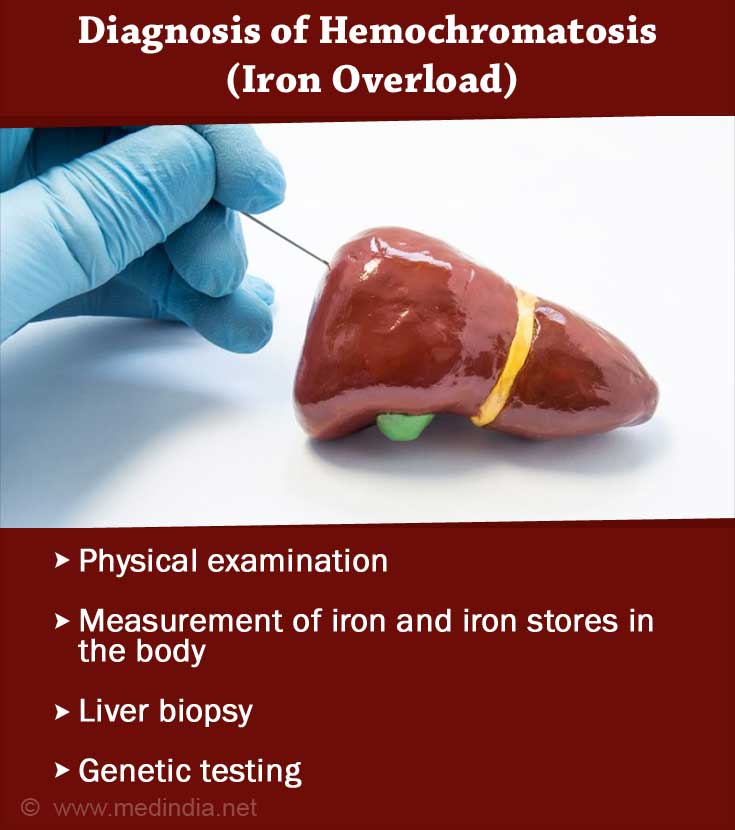
- Tests to evaluate the degree of organ damage. For example, tests like ECG (electrocardiogram) is required to evaluated cardiac function, blood glucose levels for diabetes, etc.
What are the Treatments for Hemochromatosis?
- Removal of excess blood from the veins by a process called phlebotomy. In this procedure, around 500 ml of blood is removed once or twice a week depending on the iron overload.
- Use of chelating agents. Chelating agents bind to excess iron and bring about its excretion. Chelating agents used in the treatment of iron overload include desferoxamine injection, and deferiprone and deferasirox which are given orally. These are much less effective than phlebotomy, but can be given when phlebotomy cannot be performed.
- Treatment of complications caused by hemochromatosis like heart failure, liver failure, diabetes, sexual dysfunction.
Prevention and Health Tips
Hemochromatosis does not develop in all patients who have the culprit gene. Thus, it is possible for even predisposed individuals to avoid developing the condition with a little bit of care. Some steps that can avoid the features of hemochromatosis in predisposed individuals include:
- Reduce your intake of iron-rich foods. Do not take iron supplements.
- Avoid taking high amounts of vitamin C in your diet; vitamin C increases the absorption of iron.
- Monitor and treat for hemochromatosis before organ damage sets in.
- Avoid alcohol intake to avoid damage to the liver.
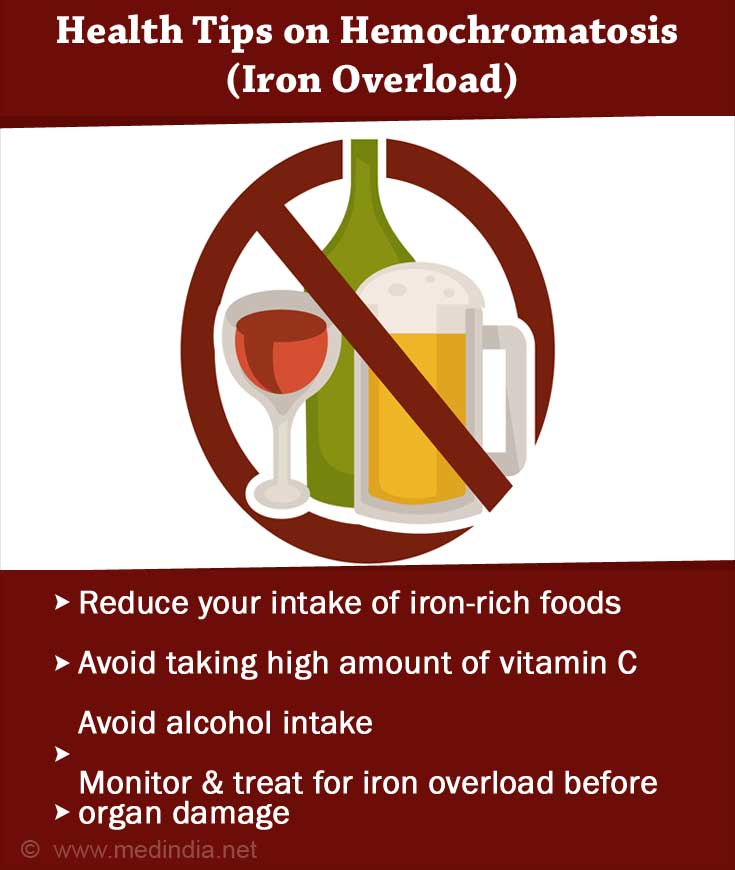
Predisposed individuals should also undergo genetic counseling to understand how the gene is likely to pass through generations.


